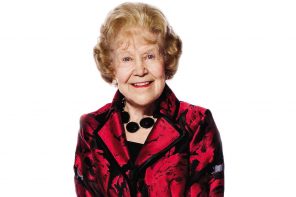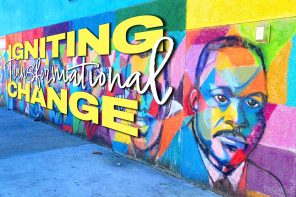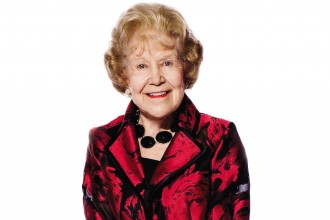More than 150 years after the community’s inception, the Eastside is Jacksonville’s last cohesive, historically Black neighborhood from the 19th century. Historic Eastside is probably best defined by “The Avenue,” or Florida Avenue, which was renamed A. Philip Randolph Boulevard in 1995. The stretch of the road just north of the sports complex used to be packed with businesses owned by people everyone called by name. The Avenue was a commerce center for the Black community with hat shops, shoe stores, restaurants, clubs, service stations and a fire station.
Unlike downtown, a significant number of these historic buildings still exist in this area north of the Jacksonville Expressway and west of Martin Luther King Parkway. There are five neighborhoods that make up historic Eastside: Fairfield, Oakland, Phoenix, Campbell’s Addition and Longbranch, said Suzanne Pickett, CEO of the Historic Eastside Community Development Corporation (HECDC), who grew up in Eastside.
In the past two years, historic Eastside, also known as Out East, has been the focus of placemaking efforts in Jacksonville, experiencing a rejuvenation spurred by a synergistic partnership of Eastside residents, community organizations, local government and major corporations. The process even has an intriguing name — “withintrification” — a term first coined by University of Pittsburgh professor Pastor John Wallace that is basically the opposite of gentrification.
Placemaking is a people-centered approach to the planning, design and management of public spaces. Put simply, it involves looking at, listening to and asking questions of the people who live, work and play in a particular space, to discover needs and aspirations. This information is then used to create a common vision for that place. The vision can evolve quickly into implementation, beginning with small-scale, doable improvements that can bring immediate benefits to public spaces and the people who use them.
Reimaging Historic Eastside
Current Eastside residents and a number of local partners believe historic Eastside is ripe for withintrification. They are working with the local nonprofit, LIFT JAX, which is using a nationally recognized model called Purpose Built Communities.
Purpose Built Communities has transformed poverty-stricken areas across the country based on a coordinated, holistic approach to revitalization, including high-quality, mixed-income housing, cradle-to-career education, community wellness and long-term financial vitality
for residents.
LIFT JAX, an initiative of business and community leaders working to eradicate generational poverty in Jacksonville, is the realized vision of the Women’s Giving Alliance (WGA).
“I assembled leaders from all sectors, including those being served, to meet monthly to develop the collective #nopovertyjax effort for four years, which was eventually called LIFT JAX,” said Ellen Wiss, who was WGA’s president at that time.
“We started with Eastside because there is strong community leadership that has been involved for years, and momentum surrounding the neighborhood — the sports-entertainment district, Cathedral District and Springfield,” said David Garfunkel, president of LIFT JAX, who first came on board to serve as a volunteer.
“When we approached community leaders to see if they wanted to partner with us, there was a lot of mistrust because of past promises made but not kept,” Garfunkel said. “We have to make sure that we’re consistent with what the neighborhood wants to see and that we’re acting in their best interest. This work happens at the speed of trust.”
Calling Eastside “Home”
“Jacksonville, like many other communities, is struggling with heirs’ property,” said Dr. Irvin PeDro Cohen, executive director of Local Initiatives Support Coalition (LISC) Jacksonville, which transforms challenged neighborhoods into healthy, sustainable communities. “Because it is a legacy community, historic Eastside has a great opportunity to prevent people from losing their homes.”
Existing homes in historic Eastside are being renovated through a Restore and Repair program spearheaded by the HECDC with funding from LISC Jacksonville, LIFT JAX, Wells Fargo and a gift from Delores Barr Weaver. The program sources bids from contractors who are based in the Eastside and other urban core neighborhoods, serving as an additional economic development mechanism.
“We are focusing on homes that need repair on Van Buren Street first and then we’ll move to other streets,” said Cohen. The goal is to have more people coexist in new homes alongside older homes.
“These are owner-occupied, single-family homes largely occupied by older residents — for as long as 70 years, in one case,” said Garfunkel. “We’re helping with deferred maintenance that, if not taken care of, will mean people have to move out, and we will lose them from the neighborhood. Repairing them improves housing prices overall in Eastside. We hope to complete at least 40 home repairs within two years.”
In addition to helping repair older homes, LISC Jacksonville and LIFT JAX launched Project Boots in September 2021 to provide down payment assistance to five local residents to build new homes on existing vacant lots in historic Eastside. All five are Jacksonville natives.
“We will be breaking ground in Fall 2022 on the first homes,” Cohen said. “We have a list of about 85 people who want to be in the program,” he added. “We’re looking at teachers, firefighters, police officers — a wide swath of people who are good role models for the next generation.”
Dr. Kiersten S. Pough, a pharmacist for CVS, and her two-year-old son are one of the first five Project Boots families. She is a fourth-generation Jacksonville native whose great-grandmother, Eva Bryant Watkins, purchased a home in Sherwood Forest in northwest Jacksonville in 1969.
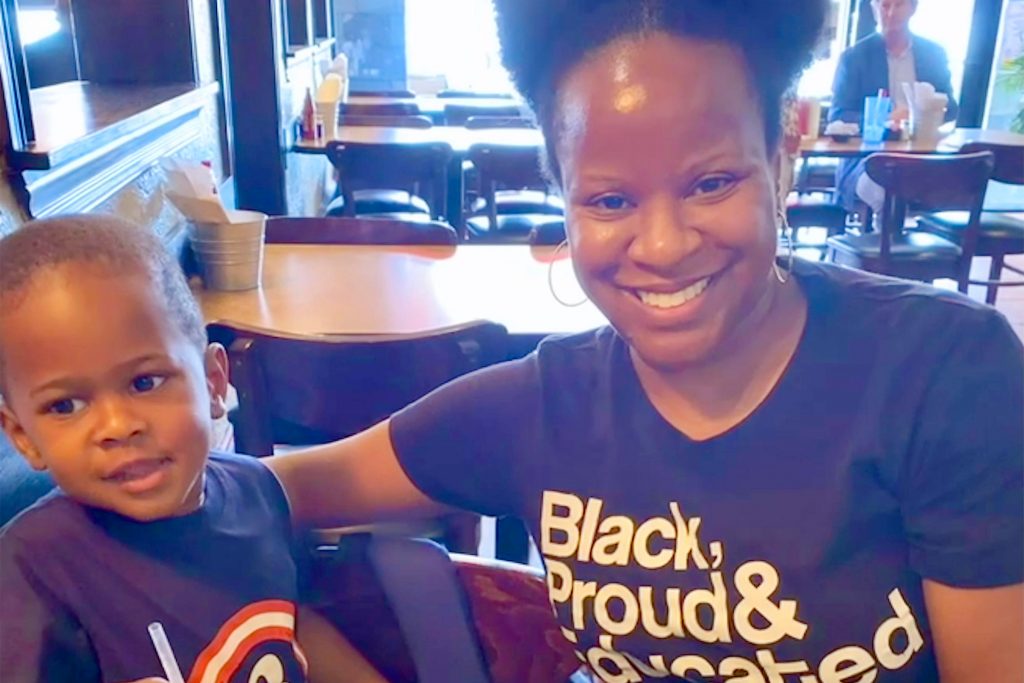
“I want to build a home in historic Eastside because I like the idea of living in a historically Black legacy neighborhood in Duval County, a neighborhood where many prominent Blacks resided as far back as the 1890s,” she said. “It’s a neighborhood where, at one point during redlining, residents had no other options. Now we have the opportunity to choose the area,” said Pough.
Community Investment
In May 2021, the Khan Family and the Jaguars Foundation made a $1 million donation to LIFT JAX and its work with the HECDC to help the Out East neighborhood initiative.
“We want to bring a winning team and coach to the city, and we want to rebuild, revitalize and rethink Jacksonville’s downtown area,” said T’Neisha Tate, Vice President of Social Responsibility and Impact for the Jaguars. “Shad [Khan] has held us to making sure that in all of our work we also find ways to build in equitable development in communities that need us the most.”
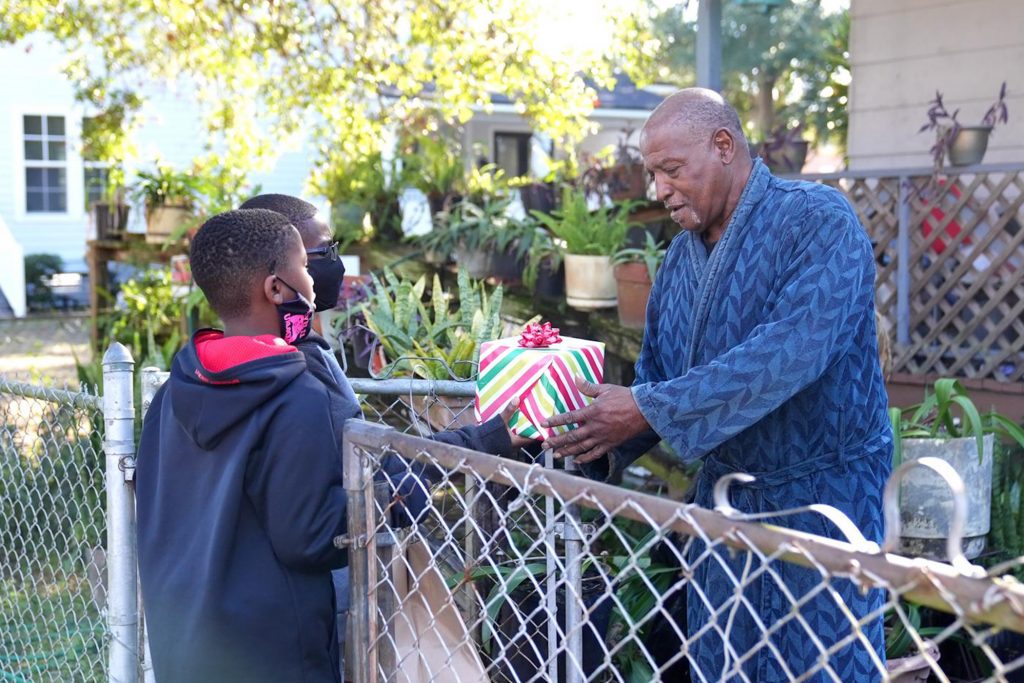
The Jaguars have donated money to upgrade play equipment in Flossie Brunson Park. Players and staff have distributed meals and gifts, and done neighborhood cleanups. Jags cornerback Shaquill Griffin even brought his personal chef along to host a community barbecue at the Eastside Brotherhood Club.
“For that one day, food insecurity was not an issue for those who attended,” said Tate.
Quarterback Trevor Lawrence, through the NFL’s “My Calls, My Cleats,” donated his cleats to benefit Longbranch Elementary School in Eastside. Third graders at the school designed the cleats, and as a thank-you, he sent them all a pair of Adidas sneakers.
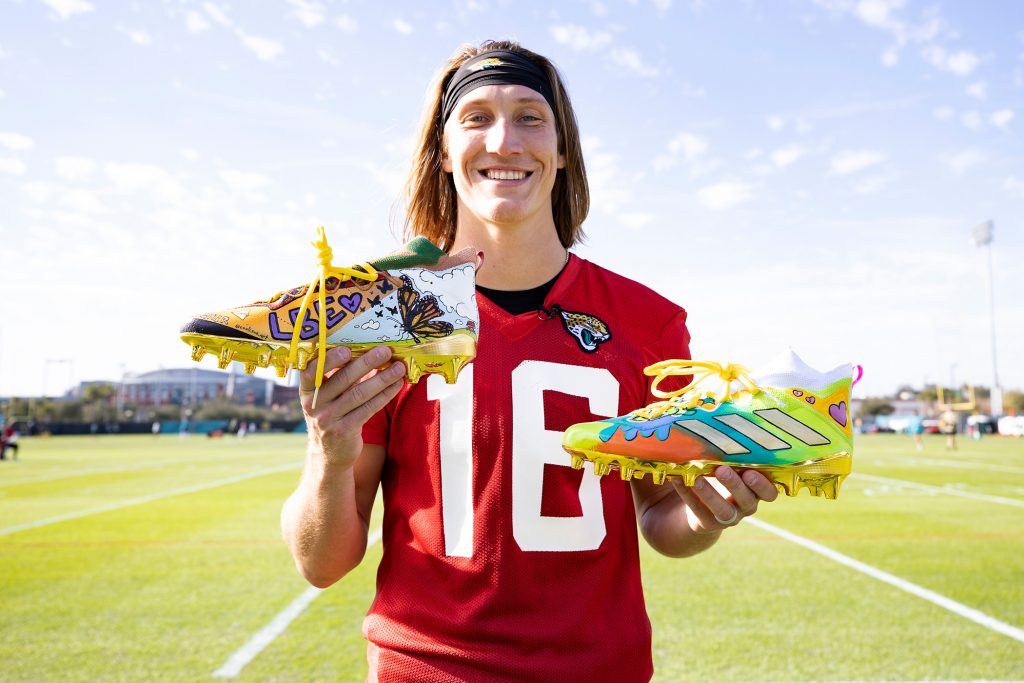
In March 2022, Florida Blue also gave $1 million to LIFT JAX to support its efforts in Historic Eastside.
“By lifting up those around us through investment in people and relevant programs, we will positively impact conditions that materially impact generational poverty,” said Darnell Smith, Florida Blue North Florida Market President.
“In addition to our investment into LIFT JAX, we’ve provided more than $713,000 to support other partners doing work in the Eastside community, including River Oak Center, Feeding Northeast Florida, the Emerald Trail, Empowering Youth and others.”
Bringing Back Business
The community is working to bring back historic businesses like Debs Store while still attracting new businesses to Eastside. First opened in 1921, the Debs Store was a family-owned and -operated grocery store that supplied fresh produce, meats and other groceries. After it closed in 2011, Out East became a food desert.
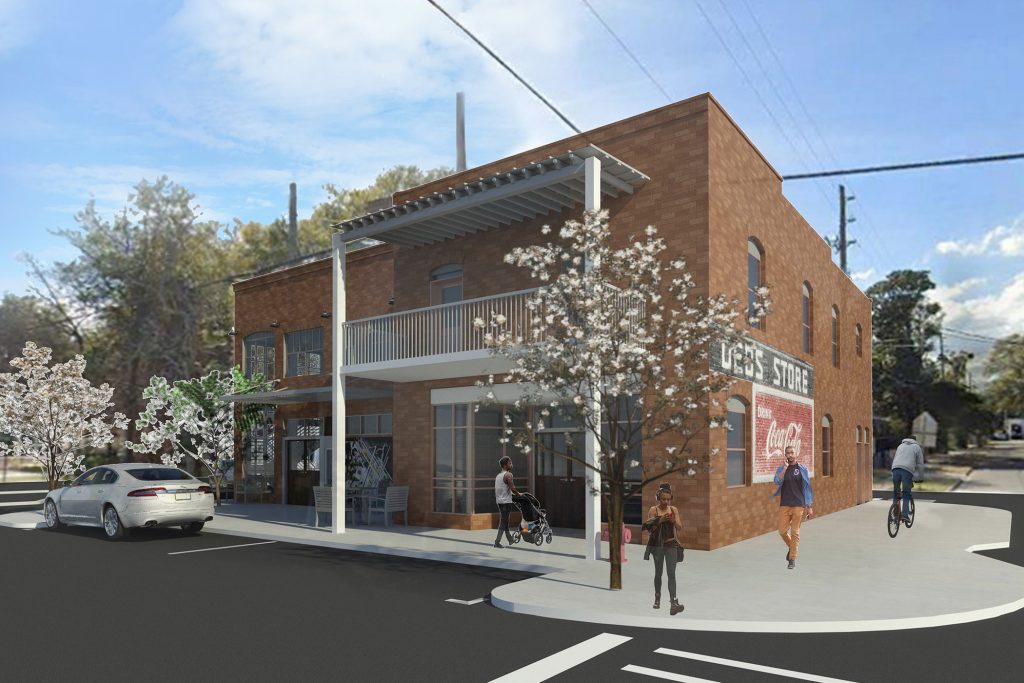
“We’ve been working to deliver on tangible projects important to the community. Our goal is to make sure we support smaller, Black-owned businesses,” said Garfunkel.
“It is the City’s obligation to invest and increase development in the urban core,” said Reggie Gaffney, District 7 City Council member. “As City Council member, it has always been my role to leverage funds for Debs Store, and I was able to help secure more than $1 million and together with LIFT JAX, more than $2 million.”
Thanks to public and private support to LIFT JAX, construction and renovation of the old Debs Store at 1478 Florida Avenue started in early June. In addition to reinvigorating the historic grocery store, VyStar Credit Union will provide banking and ATM services in a newly constructed wing of the building.
“The Debs Store will not only support the community through convenient access to nutritional food, but also by supporting local residents’ journeys to financial well-being,” said Patricia McElroy, VyStar’s senior vice president and Foundation president.
Goodwill Industries will operate the store to provide career and workforce development programming.
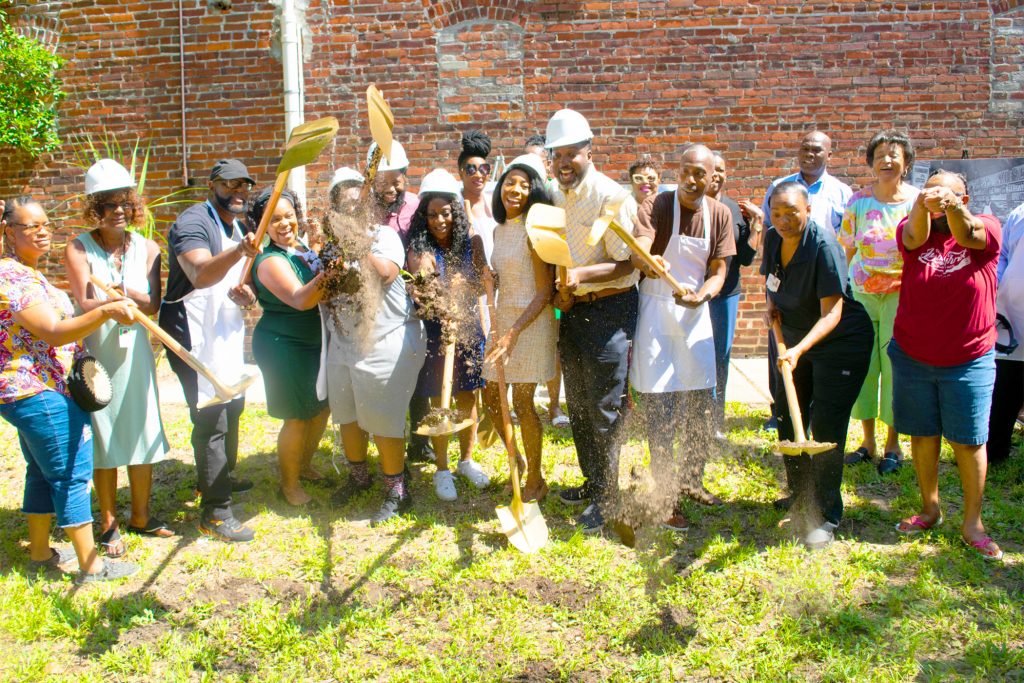
“Our new Debs Store GoodCareer Center will create convenient and reliable access to career and workforce development that will help propel community members forwards and upwards in life,” said David Rey, president and CEO of Goodwill Industries of North Florida.
In addition to VyStar, the City of Jacksonville, Florida Blue Foundation, Jacksonville Jaguars Foundation, Baptist Health, the Florida Department of State, Goodwill Industries of North Florida, the Miller Families and the Debs family all contributed to the project.
“While historic Eastside has seen its challenges over the last two or three decades, the spirit and life that once was so apparent in the vibrant streets of Eastside is still found among its current residents,” said Joe Debs, whose family ran Debs Store.
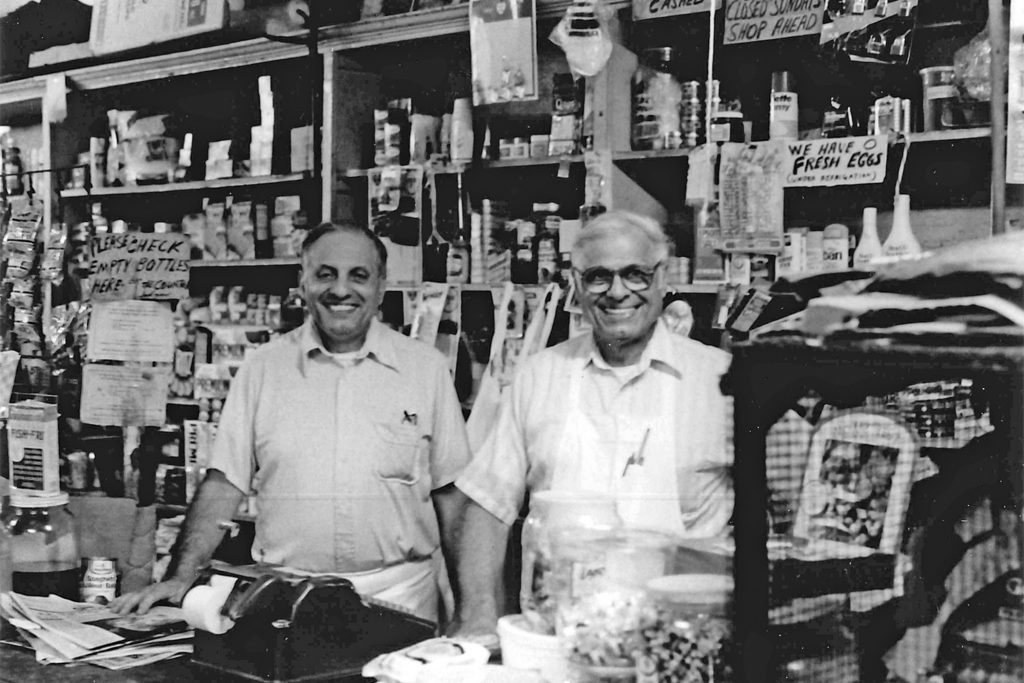
Joe Debs’ grandparents, Nicolas and Rosa Debs, started Debs Store in 1921. The original store was located on the 1500 block of Franklin Street in the Eastside. It moved into the current building at 1478 Florida Avenue in 1928. Nicolas, Rosa and their children lived upstairs in the store for about 15 years, and the entire family worked in the store. After Nicolas became ill in 1948, sons Nick and Gene ran the store until Gene’s death in 2006. Joe’s father, Nick, continued to run the store until his own death in 2011, when the store closed for good.
A Market for Minority-owned Businesses
Dawn Curling’s family also has a history of business in the Eastside community. Curling’s grandfather, Edward C. Williams, opened his first business, Cocky’s Coffee Shop, between Jessie and Phelps streets on Florida Avenue, in 1954. The shop operated until 1978. He followed with his first grocery store in 1969 at the corner of Phelps Street and Florida Avenue, then a beauty salon and shaved ice business on A. Philip Randolph Boulevard.
Today, Curling and Angie Nixon organize Melanin Market to bring products and services of minority-owned businesses to the community. Held quarterly, the market now has more than 7,000 regular attendees and 300-plus vendors who set up on five blocks from Union Street to Jessie Street along A. Philip Randolph Boulevard. Melanin Market also serves as a hub for workshops on marketing, business structure, business insurance, accounting and business credit and a series of community development events, exhibits and volunteer projects.

Dana Miller, owner of Man Cave Barbershop on the corner of A. Philip Randolph Boulevard and Pippen Street, opened his business 10 years ago.
“I grew up in Eastside. This community helped me become who I am and made me successful. It takes time, but I see a prosperous neighborhood. That’s why I’m staying here. My barbershop will be here, God’s will,” he said.
By Karen Rieley



